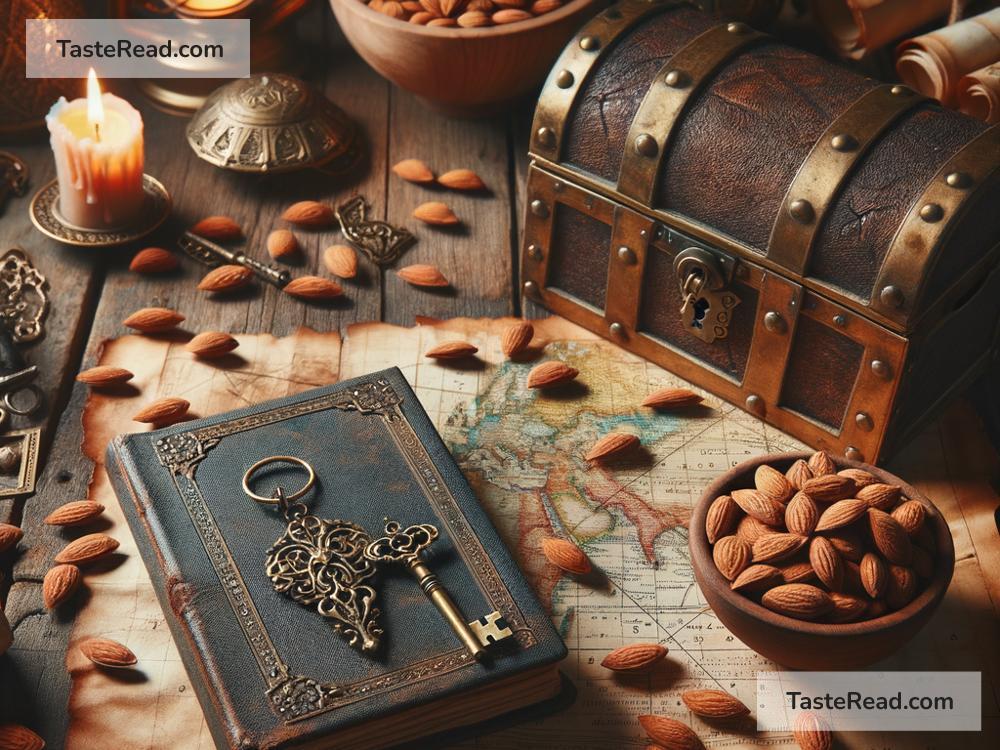How Almonds Became Keys to Hidden Treasures
Have you ever thought of almonds as more than just a tasty snack? These small, nutritious nuts may seem ordinary, but once upon a time, almonds were believed to hold secrets to hidden treasures. Over the centuries, almonds have played surprising roles in history, folklore, and even treasure hunting tales.
Today, we’re traveling back in time to uncover the story of how almonds became keys to treasures—both literal and figurative. Grab a handful of almonds, and let’s dive in!
The Symbolism of Almonds in Ancient Cultures
Almonds have been cherished by humans for thousands of years. Originating from the Middle East, almond trees are one of the oldest cultivated crops in history. Ancient civilizations saw almonds as symbols of prosperity, wisdom, and good fortune. In some cultures, almonds were considered sacred gifts, bridging the gap between humans and the divine.
For example, in ancient Egypt, almonds were a prized food and were often buried in the tombs of pharaohs to symbolize eternal sustenance for the afterlife. Somewhere in a beautifully carved jar resting beside treasures, almonds waited to nourish the journey ahead.
Similarly, in early Christian art, almonds appeared as symbols of hidden wisdom and spiritual awakening. The almond-shaped “mandorla,” surrounding images of Christ or saints, represented a gateway to divine enlightenment. From early on, almonds weren’t just food—they carried layers of meaning connected to secrets and treasures.
The Almond Connection to Hidden Riches
While almonds were primarily valued for their symbolism and nourishment, they eventually gained a reputation as holders of hidden treasures—literally. The association grew stronger through myths and legends spread across different cultures.
Take the story of Ali Baba and the Forty Thieves from One Thousand and One Nights. Though almonds don’t play a prominent role in the tale itself, many versions of the story mention the riches found in jars of nuts, dried fruits, and spices. Imagine ordinary almonds quietly disguising gold coins and precious gems hidden beneath them! These tales sparked the imagination of treasure hunters everywhere.
In medieval Europe, almonds became luxuries, only affordable to the wealthy. They were exchanged as gifts, tucked inside ornate boxes, or hidden in party cakes to surprise someone lucky enough to discover them. During festivities, finding the almond-shaped treat signified that you’d won a prize or that good fortune was coming your way.
Almonds in Treasure Maps and Stories
Throughout history, almonds featured in creative ways that fueled curiosity and excitement about hidden treasures. Treasure maps and riddles often included codes and clues referencing almond trees or almond-shaped landmarks.
One famous legend involved pirates hiding their loot under almond trees in coastal regions. These trees were thought to provide shade and protection, making them natural markers for buried treasures. The idea of searching for almond trees to unlock mysterious wealth turned these hardworking trees into symbols of adventure and discovery.
Even in literature, almonds kept popping up in treasure stories. Whether described as seeds waiting to sprout riches or simple disguises to conceal valuable objects, almonds made common appearances in tales of scheming, mystery, and profit.
Modern-Day Almond Treasures
Almonds might not hide gold coins today, but they are treasures in other ways. For one, they are considered “superfoods” due to their incredible health benefits. Rich in protein, fiber, vitamins, and healthy fats, almonds are essential keys to unlocking better health—not piles of riches, but definitely life-changing value.
Almonds also play a surprising role in modern celebrations. Whether baked into cakes at weddings or hidden inside traditional holiday treats, the thrill of finding an almond continues to bring joy. For example, in Scandinavian Christmas traditions, a single almond is hidden inside rice pudding. Whoever finds the almond can expect good luck in the coming year—or sometimes wins a small prize!
Almonds Teach Us More Than They’re Worth
Whether as snack food or in stories of hidden treasure, almonds have an enduring charm. Even though their role as physical keys to treasure might belong more to legends than reality, almonds continue to represent hidden value. They surprise us with their health benefits, enrich our cultural traditions, and remind us of the power and wonder of the natural world.
Perhaps almonds have always been treasures themselves. They are small, but they can feed large populations. They grow from beautiful trees that symbolize endurance and abundance. And they tend to show up when we least expect them—whether in ancient myth, surprising legends, or desserts at the end of a festive meal.
So, next time you grab a handful of almonds, remember: while they may not open the chest of a pirate’s gold, they hold a kind of treasure that’s just as valuable—health, heritage, and happiness.
And there you have it—the story of how almonds became keys to hidden treasures. Who would’ve thought this humble nut could carry such fascinating histories and meanings? If you’d like to uncover your own “almond treasure,” try experimenting with almonds in your cooking or gifting them during special occasions. Who knows? You might just start your own tradition filled with luck, prosperity, and smiles.


